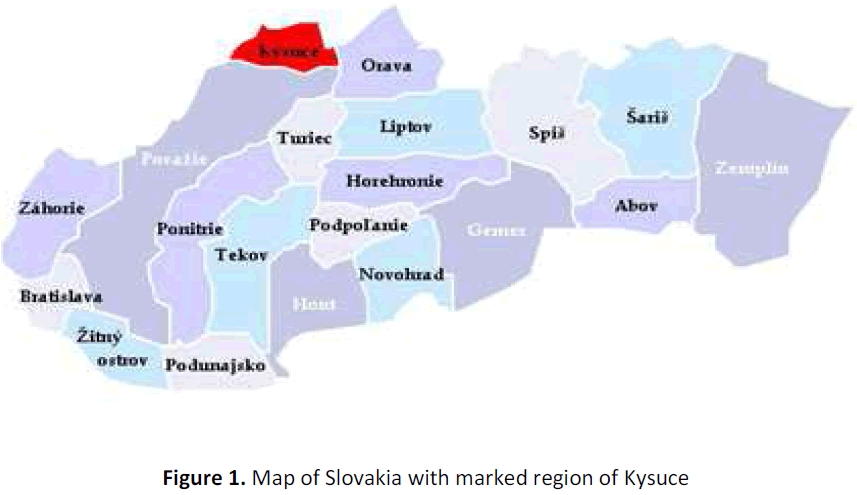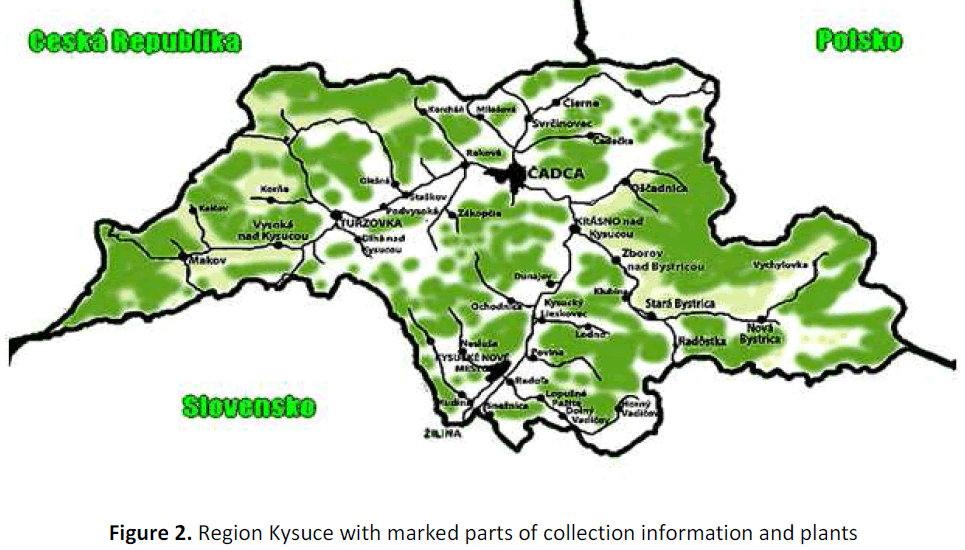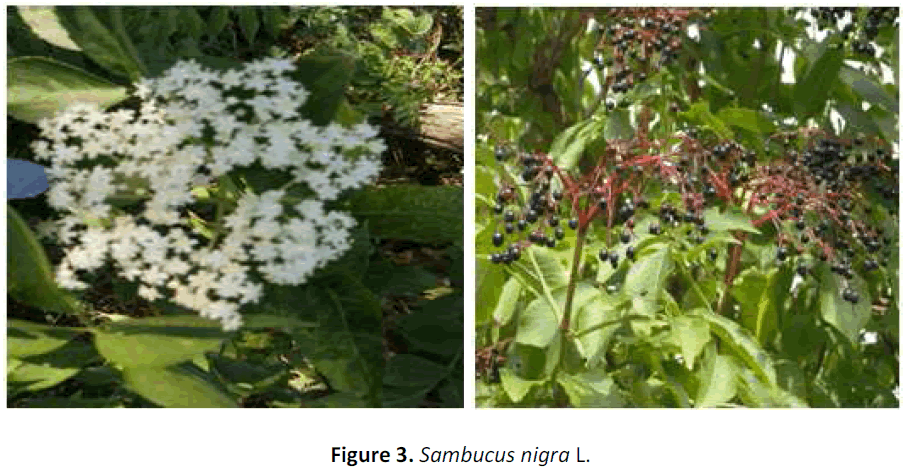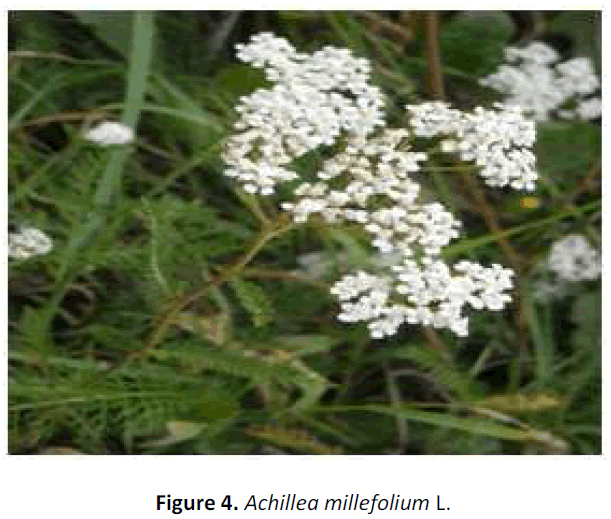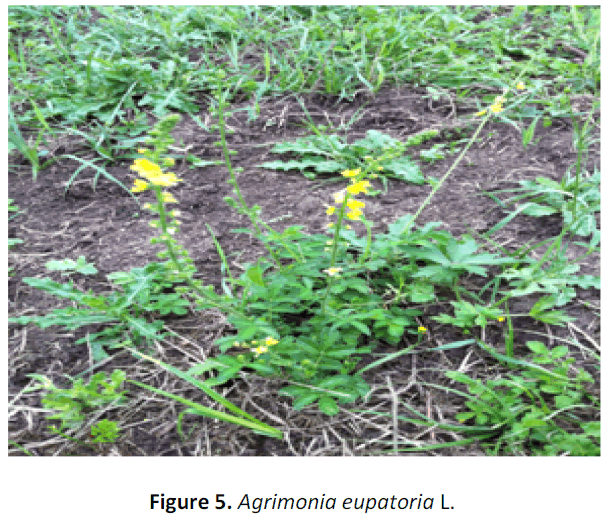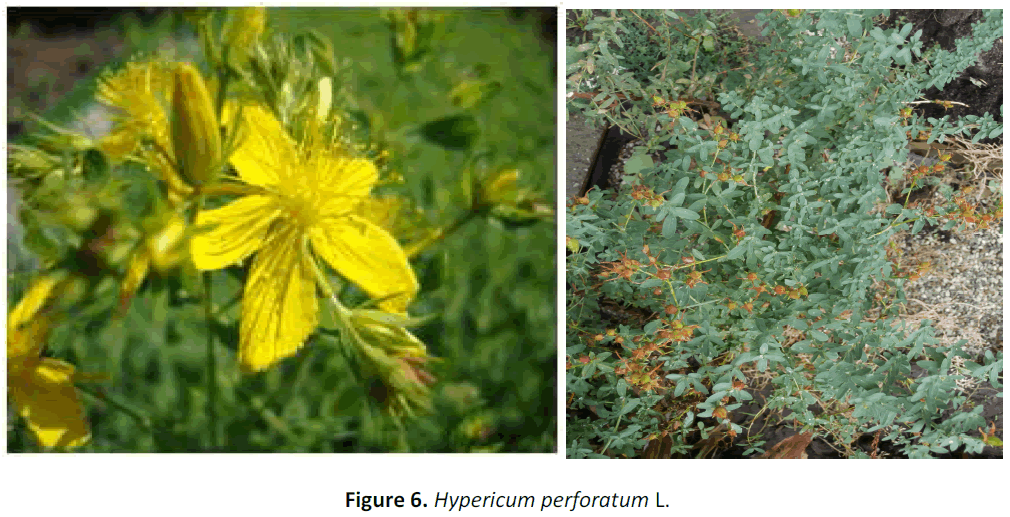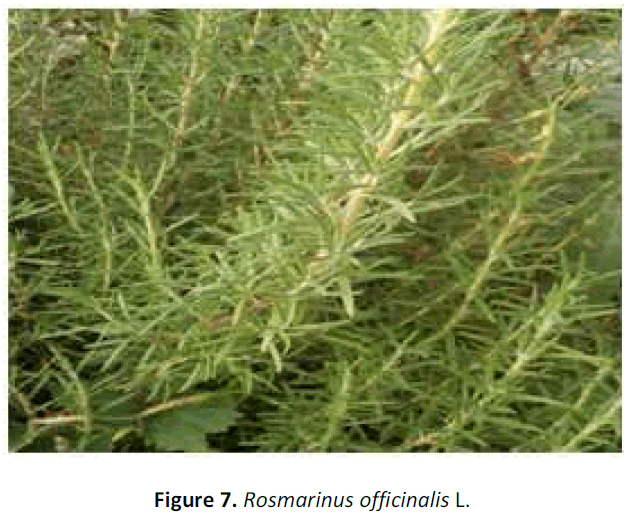ISSN : 2348-9502
American Journal of Ethnomedicine
Medicinal Herbs in Folk Medicine and Magic from Slovak Region Kysuce versus Their Current Usage
Eftimova Jarmila*, Ciberej Juraj and Stopkova Jana
Department of Pharmacognosy and Botany, University of Veterinary Medicine and Pharmacy in Kosice, Slovak Republic
- *Corresponding Author:
- Eftimova Jarmila
Department of Pharmacognosy and Botany
University of Veterinary Medicine and Pharmacy in Kosice
Slovak Republic
E-mail: Jarmila.Eftimova@uvlf.sk
Abstract
In this study, information was processed on the suitability and effects in traditional and modern phytotherapy Achillea millefolium L., Sambucus nigra L., Agrimonia eupatoria L., f. davurca (Link) Nakai, Hypericum perforatum L. from Slovak region Kysuce. In addition, data was compiled on the knowledge of the use and/or misuse of several other plant species for healing purposes in different areas ranging from protection, treatment of injury, to even dealing with love affairs. In the so called black magic practices, some species were used mostly for bewitching – causing some evil or harm to target persons or animals (Vincetoxinum spp.). Rosmarinus officinalis L. and Ledum palustre L. were the favorites plants in love magic. Therefore this often nearly forgotten traditional knowledge represents an important indicator for pharmaceutical production.
Keywords
Medicinal herbs, Traditional knowledge, Phytotherapy, Slovak region.
INTRODUCTION
Folk medicine, as a part of ethnomedicine, represents all approaches from empiric to preventive, magic and healing, as well as all knowledge on diseases, the human body, religious/cosmological imagery, hygiene practices, social environments etc. [1]. Initially, human use of plants for healing was entirely instinctive [2-5]. The folk healers prescribed some phytotherapy only on the basis of superficial and visible symptoms, therefore the healing process often failed [2]. But each successful case increased a feeling of respect towards the healers and to their methods, with an additional factor–the healers gained a reputation for the use of magic. The using medicinal plants for healing process has represented a sort of rite. Based on the orientation of this rite, there were different magics – protective, preventive/healing, beneficial, harming, those dealing with loveaffairs, prognoses (prophesy and dreams) [5]. The herbalists formed a register of illnesses named according to a special dialectal lexicon 3. In the Kysuce region for instance, lived excellent herbalists and folk healers [6]. We selected region Kysuce, distict Čadca in northwestern part of Slovakia18 ° 06 '03' to 19 ° 66 '22 "east longitude and 54 ° 59' 00 'to 54 ° 89' 01" north latitude (Figure 1). Geological base, climate, soil and altitude conditions created for specific vegetation, which has foothills and mountainous character.
MATERIAL AND METHODS
In our evaluation attempt we have selected 4 species of the most commonly used plants. For each plant, all known facts concerning their traditional utilization for the healing of diseases were collected, as well as their present use in phytotherapy and phytopharmacy practices. Collecting of plant and information about folk medicine and magic were carried on the oldest part of original village Turzovka (1598). Application of medicinal plants in various diseases we investigated by discussion with healers and citizens of village and also found in literature. These items were mutually compared and evaluated. Subsequently, data was collected on the use and/or misuse of different additional plant species in the areas of harming purposes, healing, love-oriented and protection types of magic.
RESULTS
Sambucus nigra L.
(Loniceraceae).
European elderberry
Black elderberry.
Popular names
Psiabaza, biedza, bez, pánbožková apatieka, detskýkvet, kvet Božieho dieťaťa [6,7].
Ritual use
Neutralisation of evil powers, love magic [7].
Ethnomedicine
Sambucus nigra was exploited universally. From fresh or dried flowers a concoction was made and used for colds, sore throat, and as a compress for periostitis, and suppurated teeth. Mashed elder flowers were used to help edema, rheumatism, haemorrhoides, skin illnesses and/or applied on aching ears. Elder tea was used for healing mumps or used in a mixture with milk or apple peel to help children with inflammatory diseases. The pure tea could drink only small amounts. Tea is sweetened with honey or raspberry syrup [6,7]. In addition, it was able to diminish high blood pressure, help with asthma, problems with urination or cases of blood present in the urine. Elder syrup always helped with coughing [7].
Active substances
In this plant are always present flavonols-quercetin glycosides [8], mainly rutin, isoquercetin-hyperoside, astragaline [9-12], amines (ethyl-isobutyl and isoamylamine), causing an unpleasant odour of fresh flowers, which nearly disappears during the drying process, etheric oil [9], p– coumarin, sambunigrine traces [9,12,13], chlorogenic acid [9], tanning [9-12], slime [9], in fruits occur antocyanins (sambunigrin B, sambucine [9]), beta-sitosterol/B, L, F, quercetin glycosides [8], rutin, etheric oil, organic acids, pectine [10,11,14].
Pharmaceutical effect
Diaphoretic [10], astringent [8]. In flowers – diuretic, vasotonic [13], in fruits middle laxative, corrigent, metabolic [13].
Hypericum perforatum L.
(Hypericaceae).
St. John'swort
Ľubovníkbodkovaný.
Popular names
Trezalka, čarovník, koreň Matky božej, láskavec, svätojánska bylina, dieravec, zvonček [7].
Ritual use
Magic power, when using the dry herbage, the dwellings and barns should be filled with smoke, especially in stormy weather. It was applied in the case of frightened person [7].
Ethnomedicine
It is a favourite medicine for nine diseases. It was given to dispirited people, to help with their depressive thoughts and to help cheer them up. Surgeons applied it on stab wounds. Compresses with a concoction of St. John´s wort effectively helped with sore backbone and local burns [7,15,16].
Active substances
This medicinal plant contains derivative santra glycosides-naftadiantronesespecially hypericine and its derivatives (protohypericine, proto pseudohypericin and pseudohypericin) which are concentrated in the flowers (approx.1 %) [9], flavonoides (isoquercitrin hyperoside, quercitrine, quercetine, campferol, rutine etc.) and derivatives of fluoroglucinic. Worth noting from adjacent substances are volatile oils, catechines, procyanidines, leucoanthocyanidins, phenolic acids, coumarines, sterols and their esters, fatty acids, aminoacids and carotenoides [9-13,17].
Pharmaceutical effect
Astringent, diuretic, cholagog, antiseptic, nervine [10], local antiflogistic [13,17].
Achillea millefolium L.
(Asteraceae).
Yarrow
Rebríčekobyčajný (mouse tail – myšíchvost).
Popular names
Mačíchvost, mačúch, rebríček, jazýček, papradec, stolistník, kunica [7].
Ritual use
It was believed, that the mightiest effect could be achieved when the herb was applied on St. John´s day [7,18].
Ethnomedicine
Wound healing-including wounds that are suppurating and neglected. After washing and cutting it was applied on the wound. In the village of Korn, the cut leaves were mixed with butter. In terms of first aid, it was a preferred agent in the form of finecut leaves wetted with one’s own urine. The astringent, anti-flogistic and dis-infective properties was found for both external and internal aplication [7].
Active substances
Resins, pinenes, caryophylene, proazulene,guaianolides – achilicine and leucodine, germacranolide, milefine and other sesquiterpene lactones of bitter taste. Drug contains further some polyines, tanine type tannings, phenolic acids, triterpenes, sterols, nitrogen substances, coumarines and high amount of mineral salts -especially those of Mn [9-11].
Pharmaceutical effect
antiflogistic [10], cholagoge, amaric [9,13], stomachic, carminative, spasmolytic [10], disinfectant [10], diuretic, hemostatic, expectorant, antiasthmatic, nervine [10], astringent [9], antirheumatic [13].
Agrimonia eupatoria L.
(Rosaceae).
Agrimony
Repík lekársky.
Popular names
Repík, repíček, starček, konopínec, útrobník, boží bič [7].
Ritual use
This herb was worshipped in the region of Kysuce [7].
Ethnomedicine
It was utilized for different illnesses – tuberculosis of the lungs and/or skin, blood expectoration, hemorrhoids, gout, acne, cardiac weakness, bed wetting during the night, kidney and bladder stones, by cold, mouth mucous membrane inflammation or regeneration of strained legs. In the form of compresses, it was put on wounds (especially festering ones) or used as bath for hemorrhoids and burnt skin [7,11,19,20].
Active substances
Leaves contain catechol tannings and small amount of elagic substances [8]. In the stems were found galotannin, triterpenes (ursolic acid), silicic acid, flavonoides, bitter compounds, resin traces, nicotinic acid amine and iron traces [9-11,19].
Pharmaceutical effect
Astringent [10], bacteriostatic, antiflogistic [10], gastroenteritic, diuretic [9,10], stomachic, cholagoge, disinfectant, antidiarrhoeic [10,13].
Medicinal herbs with magic effect used in the Region of Kysuce
Čiščica (Stachys recta L.), Černekoľečko (Helleborus viridis L.), Ľupšček (Levisticum officinale Koch), Maronka (Tanacetum parthenium L.), Ochvatnica (Scrophularia nodosa L.), Oman (Inula helenium L.), Rojovňik (probably Ledumpalustre L. or Melissa officinalis L. or Borago officinalis L.), Uročňica (Anthyllis vulneraria L.), Vabec (Asparagus officinalis L.), Vrutač (Tanacetum vulgare L.), Dryjok (Vincetoxinum spp. Hirundinaria L.), Černobyľa (Artemisia absinthium L.).
DISCUSSION
By data comparison on the above mentioned 4 plants traditionally used for healing purposes in the region of Kysuce and present practices we have found several features of similarity or even identity. Despite the lack of knowledge by the people of past eras of the chemical composition of these plants, especially those examples that include biologically active substances in the medicinal herbs, the plants were intuitively applied in different forms for appropriate purposes and the healing effect was often confirmed by contemporary analytical methods and clinical studies. There is real proof in the case of the so called cat tails (Achillea millefolium L.) and fortuška (Alchemilla xanthochlora L.) which were used for healing some diseases in women based on instinctive and behavioural experience and are nowadays accepted as official medicament in the form of herbal extracts supporting an active prevention against these diseases. In vitro control study proved an antiflogistic activity, where the active substances are sesquiterpenes and protease inhibitors. This fact brings a new vision and is elucidating the pharmacological effects of Achillea millefolium as an antiflogistic drug [21]. Along with the in vitro studies, complex in vivo experiments were performed with rats oriented on the safety and antigastric activity of chronic exposition to water extract. Achillea millefolium was active in the protection of stomach mucous membranes [22]. Anti-inflammatory activity has been proven with hydro-alcoholic extract gained from a related species Alchemilla vulgaris. It has been found, that an anti-inflammatory activity is based on lipo-oxygenase inhibition. Anti-inflammatory activity was determined by biological testing, where the inhibition of soya 15–lipoxygenase was investigated [13].
A concoction of Sambucus nigra flowers was used in the Kysuce region mostly for sore throat, colds, and as a compression for periostisis and/or festered teeth. Drawn elder tree flowers were put on sore ears, used for edema, rheumatism, hemorrhoids and skin diseases. Tea was served for healing of mumps and pediatric inflammatory illnesses [7]. Inflammatory activity of Sambucus nigra extract was confirmed as a strong inhibition of mediators supporting inflammation was detected23. Similarly, in the application of compressions prepared from the Hypericum perforatum herb on the sore backbone [7,15] recents studies have confirmed its antiinflammatory activity [24]. The production of prostaglandine E2 (PGE2) was inhibited by extract of Hypericum perforatum [24]. In this case the anti-inflammatory effects are probably caused by pseudohypericin and hyperforine together with other flavonoides and perhaps some thus far unidentified substances [24]. Similar effects were found on paradontitis as well, when the drugs were tested on rats (adult males). Hypericum perforatum extract reduced swelling, neutrophile infiltration, production of cytokinins and inflammatory mediators [25]. Agrimonia eupatoria was used in cases of lungs and skin tuberculosis, by the blood expectoration, hemorrhoids, gout, acne, heart weakness, over-night wetting, sand occurrence in kidney and bladder, on colds, inflammation of mouth mucous membrane and for regeneration of strained legs. In the form of compresses it was put on wounds (especially festering ones) or used as bath for hemorrhoids and burnt skin [7,11,20]. Antiinflammatory activity was confirmed and it was found that, Agrimonia eupatoria herba is able to reduce production of nitric oxide in BV microglial cells and to inhibit production of proinflammatory cytokines [26].
Some of the herbs found in the Kysuce region were classified as being magical and primarily used for ritual purposes for example Levisticum officinale Koch., (with a local name ľupšček), Anthyllis vulneraria L. (uročňica), Artemisia absinthium L. (černobyľa). The most appreciated herbs used exclusively for purposes of magic were Vincetoxinum spp., Hirundinaria L., (dryjok), Artemisia absinthium L., (černekoľečko). Actually - in the most curing cases were implemented some ritual signs connected with different witchcraft practices, magic formulae (protective magic), therefore it is quite difficult to separate the rational and irrational parts of many curative methods. The spoken word always had in magic an important power and was used specially by the incantation of cures [7]. These diseases were often sent somewhere – to inaccessible places or crossroads, and once there they were to fulfill some long-term work (such as water overflowing or sand sieving), which should be for them exhausting tasks that strongly deplete their strength to act detrimentally on patients. The lady healers used the so called začitovaňe (counting) of patient, when they tried to chase away his disease by counting down the numbers from nine. Such healing should be repeated from three sittings to nine (but never six- times, as this number was considered bad). In any event, if there was a negative result after nine repetitions, there was no hope for a successful ending. Belief in God was highly important and his divine help was often called on by the healers, even though some of them were not convinced of his about His existence [7]. In harmless love magicseveral herbs were used such as Asparagus officinalis L. marked as vabec (lure or birdcall), Ledum palustre L., Borago officinalis or L. Melissa officinalis L (rojovňik) and Tanacetum parthenium L. and Lycopodium clavatum L. (maronka). A typical resulting sign of a successful bewitching was the so called ostutki–rashes, which were accompanied with itching followed by body weakness and sometimes up to suffocation. The rashes sometimes festered and the person could even die, when they neglected the right defence, which consisted of an effective washing down (so called zmyvaňa) of the magic. They should therefore apply water from nine streams such as from the mill, under the roof, under the gutter. In the branch of harming magic the Kysuce magicians used for bewitching in addition water and personal items, as well as bones from the cemetery. Such action could cause serious damage to health, relations and/or propriety. Despite the fact that we can´t explain such an effect, there were cases in which some bewitched people without appropriate healing did in fact die. It is documented that some incarnations of magic and practices that existed in traditional folk culture possibly have an explanation connected with energeticinformational theory [1]. Mechanisms of all magic practices could be (when simplified) represented as changes of energyinformational field initiated intentionally by a person, resulting in some effects in individual bio-fields. Moreover, there could be a change in the field/sphere alone leading to a mediated influence on the material and/or the human body as well. Such changes are known in the practices of black magic1. The highest magic power was ascribed to the so called dryjok root of Vincetoxinum spp. hirundinariae; the root should be dug out by the Kysuce witches during St. John´s night [5]. This root deprived the cows of the milk production. Nowadays it is well known, that this root has a strong influence on urination and sweating. When used for longer period of time, it irritates the kidneys, initiates vomiting, diarrhea, and finally causes paralysis of respiratory ability and death [7,18]. Many rites including harming magic were directly united with the so called magically strong church feasts (Good Friday, Christmas, St. John). Another form of affecting by magic is the bewitching by eye contact with the target people or animals [7,18]. It was believed, the most endangered are small children – therefore to protect them, the following should be put into their eiderdown: the so called rojovňik of Ledum palustre, Melissa officinalis or Borago officinalis and similar effects were achieved by maronka (Tanacetum parthenium), vrutač (Tanacetum vulgare); these herbs were the most active when applied by the first trip of children outside of their home. Clinically a successful bewitching resulted in heavy nausea, collapse, faintness or vomiting. Against these symptoms should be applied a modified water (achieved by a ritual putting in embers from an oven) or using a concoction of čiščica (Stachys recta) – both preparatory tasks should be made at the western part of the house during sunset. The used modified water should by discarded at places where it was safe, as there was still a danger it could harm somebody. Such places were on cemeteries, yard or the corner of gardens under the tree Sambucus nigra. Part of these healing procedures consisted of some physical contact with the patient – the healer touched the face of the affected person and tried to throw away the bad power, or his body was dried with the reverse side of his underwear. In the protective magic, against harmful magic, many species of the herbs were used, for instance Artemisia vulgaris L. and Inula helenium. The most valuable was the flower called BieleNeto (if it was available on the place) or Artemisia absinthium L. and then the bad powers could not harm any person, animal or property. Some of the above described practices have survived in the remote Kysuce villages. The fact that this traditional knowledge remains is owing to the transfer of many prescriptions from older to younger generations, so the old and many times verified formulas are still available and some people could use them for the preparation of healing teas, tinctures and drugs.
REFERENCES
- Belko D. Vývojzáujmu o mágiu (Interest development for magic). Jurnal SAV 1997; 3: 43.
- Toman N. Záhadaľudovéholiečiteľstva (Mystery of ethnomedicine) Bratislava: EKO-konzult; 2003, ISBN 9788089044801.
- Grešák J. Ľudovéliečiteľstvo. Kysuckýkalendár. (Ethnomedicine. Kysuce calendar). Čadca; 2005: 92-95. ISBN 80- 88875-11-0
- Pamukov D, Achtardžiev Ch. Prírodnálekáreň. (Natural pharmacy). Bratislava: Príroda; 1981: 305. ISBN 064- 113-88.
- Paštrnák L., Bukovan J., Marec J., Palica A., Velička D., Zajac M., Zimka O. Olešná 1619-2009: Magma; 2009: 367-378.
- Hujík V. O kysuckomľudovomliečiteľstve. Kysuckýkalendár. (On Kysuce ethnomedicine. Kysuce calendar) Čadca; 2001: 55- 57. ISBN 80-88875-05-6.
- Marec, J. Veľkáknihakysuckejmágie. Rukopis (Great book on Kysuce magic. Manuscript).
- Jahodár L. Farmakobotanika (Pharmacological botany). Karolinum; 2009: 65-66, 103-104,132-133,167. ISBN978-80- 246-1791.
- Jindrová J, Malovcová M. Das neueHandbuch der Heilpflanzen - Liečivérastliny. Ottovonakladatelství; 2010; 27, 38, 231, 390. ISBN 978-80-7360-589-6.
- Košťalová D, Fialová S, Račková L. Fytoterapia v súčasnejmedicíne. Martin Osveta; 2001; 384, ISBN 978-80-8063-384- 4.
- TomkoJ. Farmakognózia (Pharmacognosis). Martin: Osveta; 1999: 407, ISBN 80-8063- 014-3.
- Macku J., Krejča J. Atlas liečivýchrastlín (Atlas of medicinal herbs). Bratislava: Veda; 1988: 472.
- Velgosová M, Velgos Š. Našeliečivérastliny (Our medicinal herbs). Bratislava: Slovensképedagogickénakladateľstvo; 1988: 384.
- Thurzová L, Kresánek J., Mareček Š., Mikla K.Malý atlas liečivýchrastlín (Small atlas of medicinal herbs). Martin: Osveta; 1983: 464, ISBN 70- 006-84.
- Marec J. V pazúrochcivilizácie: Schopnosť porozumieť (In the clutches of civilisation. Ability to understand); 2007: 2.
- Marec J. Tradičnéliečiteľstvo a ľudová mágia na horných Kysuciach. Traditional medicine and folk magic on Upper Kysuce). Maticaslovenská; 2011: 2, ISBN 9788081150517.
- Eftimová J. 2010 Virtuálna záhrada liečivých rastlín (Virtual garden of medicinal herbs). https://www.uvlf.sk/sk/ Virtuálnazáhradaliečivýchrastlín.
- Marec J. 2007. V pazúrochcivilizácie: Dobré a zlékúzla (In the clutches of civilisation. Positive and negative magic) Kysuce 2007; 17: 2.
- Kresánek J, Kresánek J. Atlas liečivýchrastlín a lesnýchplodov (Atlas of medicinal herbs and berries). Osveta; 2008: 62, 172, 250, 252 ISBN: 9788080632922
- Pamukov D, Achtardžiev Ch. Prírodnálekáreň. (Natural pharmacy). Bratislava: Príroda; 1981: 305, ISBN 064- 113-88.
- Benedek B. Kopp B., Melzig M. F. Achilleamillefolium L. s.l. – Is the anti- inflammatory activity mediated by protease inhibition? Journal of Ethnopharmacology. 2007; 113: 312-317.ISSN 0378-8741.
- Cavalcanti A.,Baggio C. H., Freitas C. S., Rieck L. , de Sousa R. S., Da Silva-Santos J. E., Mesia-Vela S., Andrade Marques M. C. Safety and antiulcer efficacy studies of Achilleamillefolium L. after chronic treatment in Wistar rats. Journal of Ethnopharmacology. 2006; 107: 277-284. ISSN 0378-8741.
- Harokopakis E., Albzreh M. H., Haase E. M., Scannapieco F. A., Hajishengallis G. Inhibition of proinflammatory activities of major periodontal pathogens by aqueous extracts from elder flower (Sambucusnigra). Journal of preriodontology. 2006; 77: 271- 279. ISSN 0022-3492.
- Hammer, K. Hillwig M.L., Solco A.K., Dixon P.M., Delate K., Murphy P.A., Wurtele E.S., Birt D.F. Inhibition of prostaglandin E-2 production by anti- inflammatory Hypericum perforatum extracts and constituents in RAW264.7 mouse macrophage cells. Journal of agricultural and food chemistry. 2007; 55: 7323-7331. ISSN 0021-8561.
- Paternity I., Briguglio E., Mazzon E., Galuppo M., Oteri G., Cordasco G., Cuzzocrea G. Effects of Hypericum Perforatum, in a rodent model of periodontitis. BMC complementary and alternative medicine. 2010; 73: 1-10. ISSN 1472-6882.
- Bae H., Kim H.J., Shin M., Lee H., Yin C.S., Ra J., Kim J. Inhibitory effect of Agrimoniaeherba on lipopolysaccharide- induced nitric oxide and proinflammatory cytokine production in BV2 microglial cells. Neurological Research. 2010; 32: 53-57, ISSN 0161-6412.
Open Access Journals
- Aquaculture & Veterinary Science
- Chemistry & Chemical Sciences
- Clinical Sciences
- Engineering
- General Science
- Genetics & Molecular Biology
- Health Care & Nursing
- Immunology & Microbiology
- Materials Science
- Mathematics & Physics
- Medical Sciences
- Neurology & Psychiatry
- Oncology & Cancer Science
- Pharmaceutical Sciences
